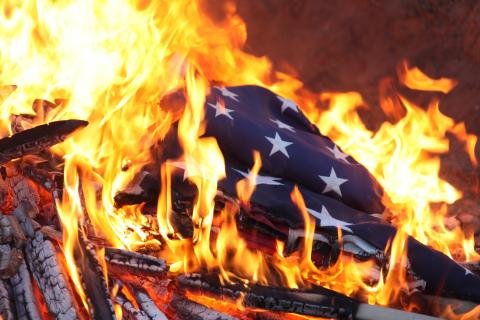American Secession

Ron Paul Institute - Adam Dick
On Independence Day, many Americans think about, at least briefly, the American Revolution. One important thing they should consider in this reflection is that the American Revolution is misnamed. A more appropriate name would be the American Secession.
And an appropriate question for now, when the power of the United States government and Americans' dissatisfaction have become immense, is whether the time is right for another American Secession.
The misnamed American revolutionaries were not seeking to replace the king or parliament in Great Britain. That is what revolutionaries would seek. Instead, they wanted their respective colonies to become independent of the control of Great Britain — to secede.
Indeed, this American Secession could even be thought of as the Thirteen Secessions, pursued at the same time by thirteen separate colonies of Great Britain. There was coordination among colonies, and people from different colonies did at times fight together against Great Britain's military. But, the secessions were pursued for individual colonies, not some overarching American government.
In the conclusion of the Declaration of Independence, the July 4 ratification date of which has become the yearly day of celebration of Independence Day over the nearly 250 years that have passed, it is made crystal clear that it is thirteen colonies asserting their independence and that they are doing so as independent states, each of which asserts all the powers on its own as a state like Great Britain possessed:
We, therefore, the Representatives of the united States of America, in General Congress, Assembled, appealing to the Supreme Judge of the world for the rectitude of our intentions, do, in the Name, and by Authority of the good People of these Colonies, solemnly publish and declare, That these United Colonies are, and of Right ought to be Free and Independent States; that they are Absolved from all Allegiance to the British Crown, and that all political connection between them and the State of Great Britain, is and ought to be totally dissolved; and that as Free and Independent States, they have full Power to levy War, conclude Peace, contract Alliances, establish Commerce, and to do all other Acts and Things which Independent States may of right do.
The understanding of the word “state” has become perverted over time in America since the signing of the Declaration of Independence. The states of the United States gave up some power under the provisions of the United States Constitution a decade after their successful secession from Great Britain. Then, with time, the national government in Washington, DC continued to grow, grabbing up from states of the union many of the other powers that states had been understood to possess. The fifty states of the United States have to a large extent become mere administrative regions of the national US government.
Yet, the states still maintain a significant amount of independence. Consider that some states have been able to establish themselves as comparative tax havens by not having an income tax or a sales tax, that over the last quarter century many states have chosen to significantly liberalize marijuana laws while the US government maintains its war on marijuana, and that during the coronavirus scare states pursued quite different policies, though early on nearly all states’ policies featured very broad and extreme attacks on liberty.
What if the fetters of the US government were removed and the 50 states of the United States of America could become “Free and Independent States” ...




























Comments
Go Ahead, Make Biden's Day
Comment
American secession
In reply to Go Ahead, Make Biden's Day by Brother Bob
Comment